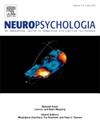学习执行复杂任务时功能性脑网络动力学的优化。
IF 2
3区 心理学
Q3 BEHAVIORAL SCIENCES
引用次数: 0
摘要
我们提出了两种新的自有序转换(SOS)功能磁共振成像范式,旨在研究大脑网络如何在学习具有多目标的复杂任务时促进结构化人类行为的建立。在研究1中,SOS通过最少的预训练和详细的反馈来执行,以捕捉学习过程,而在研究2中,大量的预训练和最少的反馈被用作控制,其中行为持续优化的潜力减少了。研究1揭示了学习过程的变化,其特征是任务切换决策频率的降低,从而导致那些将切换频率降至最低并将其行为安排在简单结构化例程中的个体的任务表现更出色。此外,通过练习,在进行歧视试验时,多需求皮层的激活反应变弱,而默认模式网络的反应变强。引人注目的是,在SOS事件中观察到相反的模式,随着练习,多需求皮层的激活变得更敏感,默认模式网络的激活变得更不敏感。这些神经变化与行为习惯的结构程度相关。在研究2中,学习的神经特征不那么明显,在研究2中,任务是在进入扫描仪之前练习的。我们的研究表明,当人们学会执行复杂任务时,默认模式网络和多重需求皮层是相互补充的,通过对重复和执行切换需求进行不同的微调。本文章由计算机程序翻译,如有差异,请以英文原文为准。
The optimisation of functional brain network dynamics when learning to perform complex tasks
We present two novel self-ordered switching (SOS) fMRI paradigms designed to investigate how brain networks facilitate the establishment of structured human behaviour during the learning of complex tasks with multiple goals. In study 1, SOS was performed with minimal pretraining and detailed feedback to capture the learning process, while in study 2 substantial pretraining and minimal feedback were used as a control where the potential for ongoing optimisation of behaviour is reduced. Study 1 revealed changes in the learning process characterised by a decrease in task-switching frequency, resulting in superior task performance for individuals who minimised switch frequency and ordered their behaviour in simple structured routines. Additionally, with practice, multiple-demand cortex activation became less responsive, and the default mode network became more responsive when performing discrimination trials. Strikingly, the opposite pattern was observed for SOS events, with multiple-demand cortex activation becoming more responsive and default mode network activation becoming less responsive with practice. These neural changes correlated with the degree of structure of behavioural routines. The neural signatures of learning were less evident in study 2, where the task was practiced prior to entering the scanner. Our studies demonstrate that the default mode network and multiple demand cortex complement each other when people learn to perform complex tasks by becoming differentially fine-tuned to routine trial demands vs. executive-switching demands.
求助全文
通过发布文献求助,成功后即可免费获取论文全文。
去求助
来源期刊

Neuropsychologia
医学-行为科学
CiteScore
5.10
自引率
3.80%
发文量
228
审稿时长
4 months
期刊介绍:
Neuropsychologia is an international interdisciplinary journal devoted to experimental and theoretical contributions that advance understanding of human cognition and behavior from a neuroscience perspective. The journal will consider for publication studies that link brain function with cognitive processes, including attention and awareness, action and motor control, executive functions and cognitive control, memory, language, and emotion and social cognition.
 求助内容:
求助内容: 应助结果提醒方式:
应助结果提醒方式:


